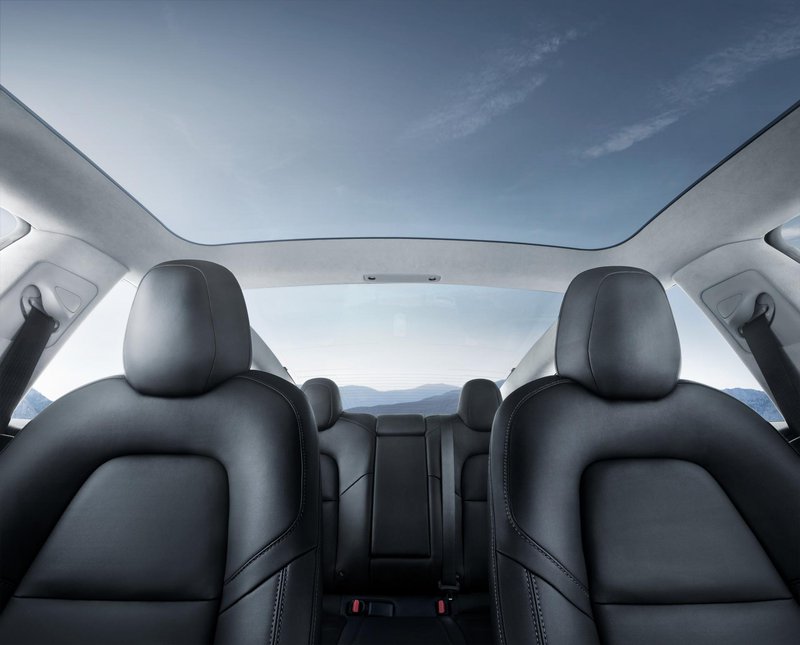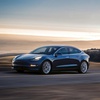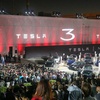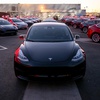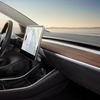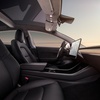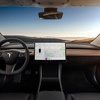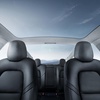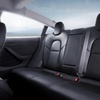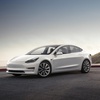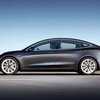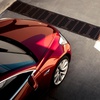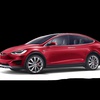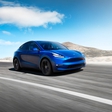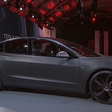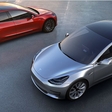

At the closed-circle ceremony in the Fremont Tesla factory, Elon Musk delivered on his promise from last spring, when he first introduced the car by officially presenting the production version of the Model 3, Tesla's electric rival to the BMW's 3 Series, which will soon be released to the first customers.
Text by Matija Janežič, Photography by Tesla Motors, Render of Tesla Model Y by Bojan Perko
Early on, Tesla Model 3 will be available in two versions. With a 355 km (220 miles) range, the standard version will accelerate to 60 mph in 5.6 seconds and top out at 210 km/h (130 mph). The "Long Range" edition, on the other hand, will boast not only an extended range of 500 km (310 miles) on a single charge, but also a 5.1 second acceleration time to 60 mph, and a maximum speed of 225 km/h (140 mph). According to Tesla, the first batch of cars will be equipped with rear-wheel drive only, meaning that four-wheel drive will require a wait, for those eager to try it out.
The production of the dual motor version will be accompanied by the notorious Ludicrous mode.
The standard model will be priced at 35,000 USD (29,337 EUR), and 44,000 USD (36,881 EUR) with the extended range. These are factory prices, of course, whichwill be significantly reduced through subsidies, and will most definitely seea revision, when starting out in Europe. Tesla promises to reveal them by the end o f 2 0 17.
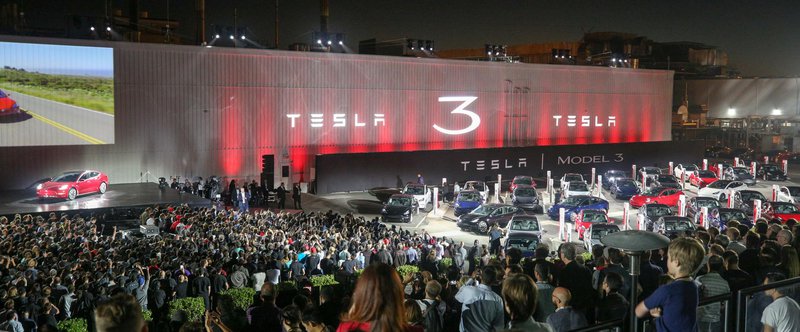
Tesla will set off to a slow start, in terms of delivery. With an estimated 100 vehicles in August, the production in September is expected to pick up to 1500 units, and 20,000 units in the subsequent months. Most of the 500,000 buyers who ordered the Model 3, following its introduction last Spring, will have to go without till the second half of 2018.
Tesla puts the Model 3 in the ring with the middle-class sports sedans, such as the BMW 3 Series, the plug-in hybrid version of which is the closest approximation to electric cars.
TMeasuring in at 4.6794 m in length and 1.849 m in width, Tesla's Model 3 is somewhat longer and wider than the BMW 3 Series. Thanks to the combination of a high-performance steel and aluminum, the car is relatively light, for a battery-powered electric car, weighing no more than 1610 kg in the short- and 1730 kg in the long-range version. The weight distribution among the axles is good, at 47:53 and 48:52 ratio in short and long range versions, respectively.
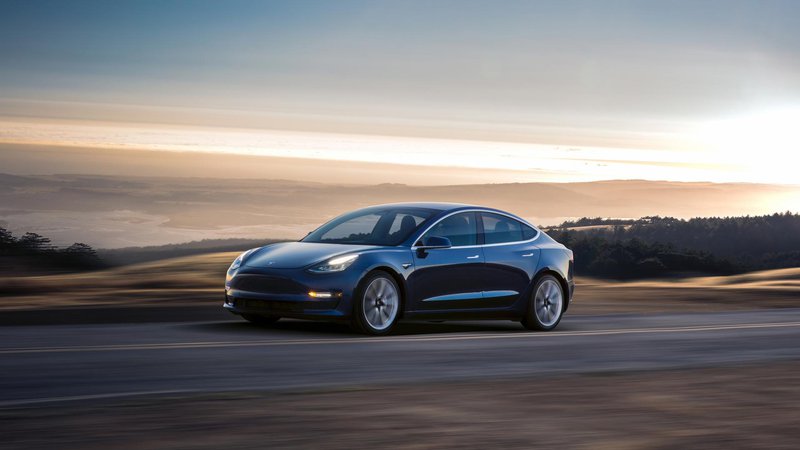
How about the charging rates? On a supercharger, the battery, in a version with a lesser range, will be replenished for a further 130 miles in a half hour, while a domestic 240V and 32A socket will charge the battery at a rate of 30 miles per hour. A half-hour-charge on a supercharger will be enough for a 170 mile run, in a version with longer range, which will harvest 37 miles of range per hour, while plugged into a domestic 240V and 40A socket at your home.
The Model 3 is also passenger-friendly. Up to five in number, they'll be able to loadthe car with up to 425 l of luggage. But Tesla has more up their sleeve, especially when it comes to entering and starting the car. The Model 3 is one of the very few cars on the market that lets you enter the car not only by way of key, but also by using a Bluetooth interface on your phone (in contrast to some cars, that use the RFID system on a smart phone).
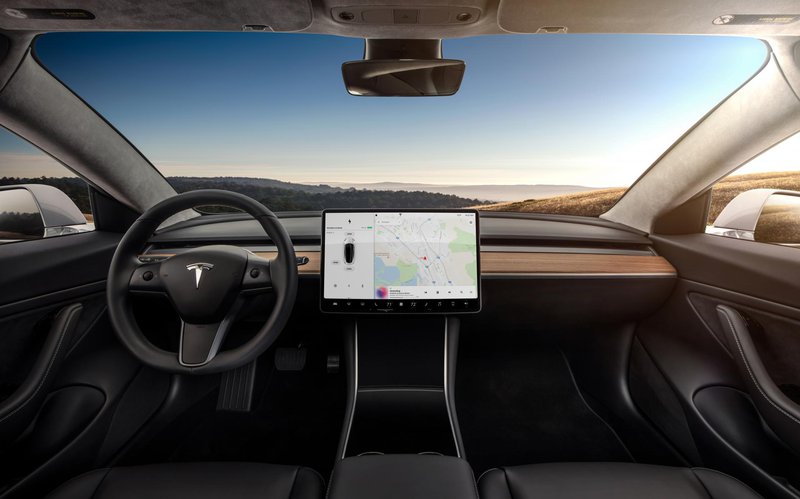
Needless to say, the steering wheel and the pedals aren't going anywhere quite yet. The car's operating and infotainment functions will be concentrated, in their entirety, on a 15-inch touch screen located in the center of the dashboard. How that will pan out in practical use remains to be seen. The car will also accept voice commands. The safety will be in the hands of 8 cameras, a radar that will monitor the area in front of the car, and 12 ultrasonic sensors that will be used by the revamped driving aid system, the Autopilot, which will be available in the Model 3, for a fee. In the future, Tesla assures, the Autopilot will be equipped to carry out the functions of autonomous driving.
The Model Y will not deviate much from the current Tesla fleet, in terms of design, but from what we know so far, its platform will not replicate the one used in the Model 3.
What about the Model Y, the downsized and streamlined version of the Model X? It's expected to be introduced in 2019, and enter serial production in 2020, tweets Elon Musk. The Model Y is designed to cater largely to those who like the idea ofan electric sports cross-over, but aren't willing to fork out 82,500 USD, which is what the Model X sells for. Overall, they very much compare to the clientele interested in the Model 3, in that they reject paying huge sums of money just to become a part of electric mobility. In one of his tweets, Musk himself confessed to having made a mistake by allowing the Model X to become this intricate.
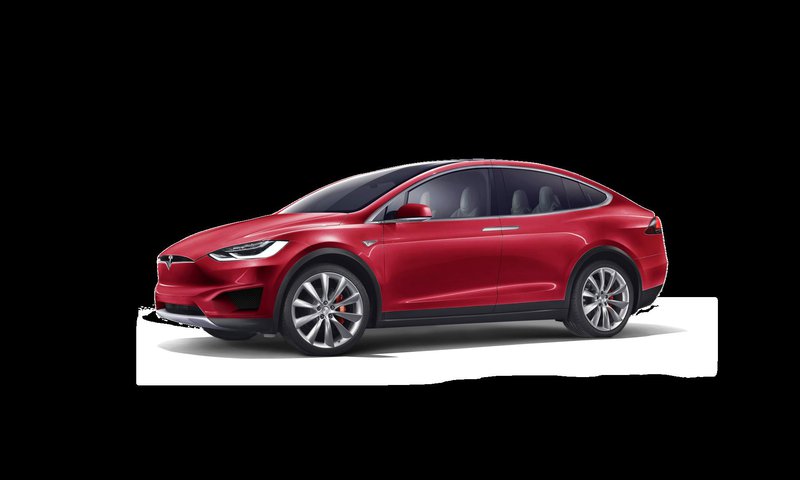
The Model Y will not deviate much from the current Tesla fleet, in terms of design, but from what we know so far, its platform will not replicate the one used in the Model 3. Musk promises that Tesla will try to come by other effective solutions for the car, the reduction in electric wiring length being one of them. If the Model S relies on about 3 km of wiring, and the Model 3 on about half that amount, then the Model Y is planned to be contingent on about a 100 m worth of wiring.
It looks like Tesla Model Y may very well turn out to be a fascinating set of wheels.
